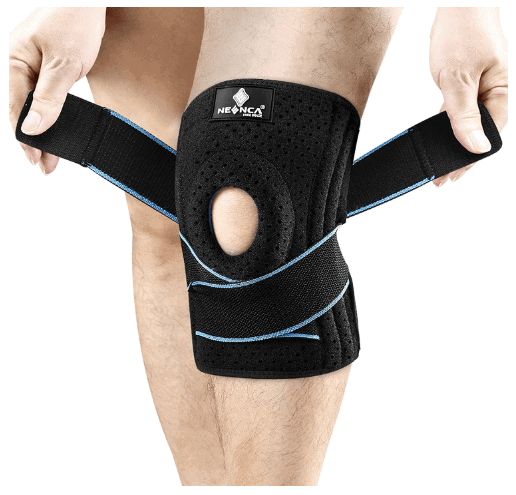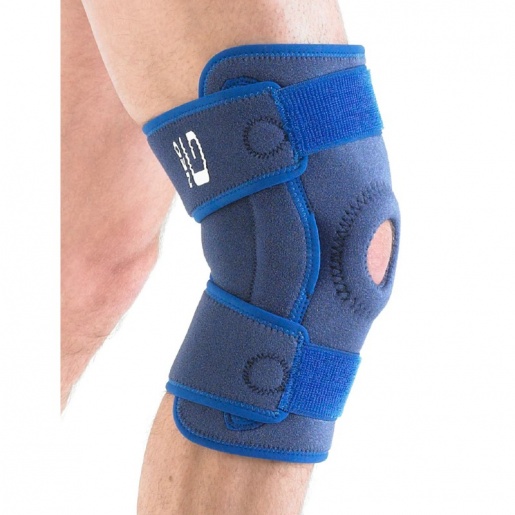Should I Wear A Knee Brace For Chondromalacia Patella

Imagine this: You're halfway through your favorite hiking trail, the sun kissing your face, the birds singing their cheerful melodies. Suddenly, a sharp pain stabs through your knee as you descend a gentle slope. It’s a familiar ache, a nagging reminder of the chondromalacia patella that's been bothering you for months. You wonder, as you cautiously take another step, if wearing a knee brace would have made a difference.
The question of whether to wear a knee brace for chondromalacia patella, often referred to as "runner's knee," is a common one, fraught with varying opinions and experiences. While a knee brace isn't a universal cure, it can be a valuable tool for managing pain and improving function for some individuals.
Understanding Chondromalacia Patella
Chondromalacia patella is a condition where the cartilage under the kneecap (patella) softens and deteriorates. This can happen due to several factors, including overuse, misalignment of the knee, muscle imbalances, and injury.
Symptoms often include a dull, aching pain in the front of the knee, especially during activities that put stress on the joint, like running, squatting, or climbing stairs. The pain might be accompanied by a grinding or popping sensation.
It's crucial to understand that chondromalacia patella is not a one-size-fits-all condition. The severity of symptoms and the underlying causes vary greatly from person to person.
The Role of Knee Braces
Knee braces are external supports designed to provide stability, reduce stress on the knee joint, and alleviate pain. They come in various styles, each with its own specific purpose.
Types of Knee Braces
Sleeve-type knee braces, often made of neoprene, offer compression and warmth, which can help reduce pain and swelling. They are generally used for mild to moderate symptoms.
Hinged knee braces provide more significant support and are often recommended for individuals with instability or more severe chondromalacia patella. They limit side-to-side movement and can help prevent further injury.
Patellar stabilizing braces feature a cutout or support around the kneecap to keep it properly aligned. These are particularly helpful if misalignment is contributing to the condition.
Benefits of Wearing a Knee Brace
One of the primary benefits is pain reduction. By providing support and stability, knee braces can reduce the stress on the patellofemoral joint, minimizing pain during activity.
Improved joint stability is another key advantage. A brace can help keep the kneecap properly aligned and prevent it from tracking improperly, which can exacerbate chondromalacia patella.
Some people find that wearing a brace allows them to remain active and continue participating in activities they enjoy. This can have a positive impact on their overall quality of life.
When to Consider a Knee Brace
Consulting a doctor or physical therapist is the first and most important step. They can properly diagnose your condition, determine the underlying cause, and recommend the most appropriate treatment plan.
If you experience pain during activities that stress the knee, such as running, squatting, or climbing stairs, a knee brace might be beneficial. It's essential to discuss this with your healthcare provider.
Individuals with patellar misalignment may find a patellar stabilizing brace particularly helpful. Again, professional guidance is crucial to ensure the correct type of brace is chosen.
Important Considerations
A knee brace should be seen as one component of a comprehensive treatment plan. It shouldn't be used as a replacement for other important interventions, such as physical therapy, strengthening exercises, and activity modification.
Strengthening the muscles around the knee, particularly the quadriceps and hamstrings, is essential for supporting the joint and improving stability. Physical therapy can provide targeted exercises to address muscle imbalances and improve knee function.
Modifying your activity level to avoid activities that aggravate your symptoms is also important. This might involve reducing the intensity or duration of your workouts, or choosing alternative activities that are less stressful on the knee.
It's crucial to choose the right size and type of brace. An ill-fitting brace can be uncomfortable and ineffective, and may even cause further irritation. Follow the manufacturer's instructions carefully and seek professional advice if needed.
Over-reliance on a knee brace can lead to muscle weakness. The muscles around the knee might become less active as the brace provides external support.
Expert Opinions and Research
According to the American Orthopaedic Society for Sports Medicine (AOSSM), bracing can be a useful adjunct to other conservative treatments for patellofemoral pain. However, they emphasize the importance of addressing the underlying causes of the condition.
Research published in the National Institutes of Health (NIH) has shown that patellar stabilizing braces can improve kneecap alignment and reduce pain in some individuals with chondromalacia patella.
Many physical therapists advocate for a holistic approach, incorporating bracing, exercise, and activity modification. They stress the importance of individualized treatment plans based on the patient's specific needs and goals.
Real-Life Experiences
"I was struggling with knee pain for months and couldn't even walk without discomfort," says Sarah, a 35-year-old runner. "My doctor recommended a knee brace, and it made a huge difference. I was able to start running again, slowly at first, but now I'm back to my regular routine."
However, not everyone has the same experience. "I tried a knee brace for my chondromalacia patella, but it didn't really help," says Mark, a 42-year-old cyclist. "I found that physical therapy and strengthening exercises were much more effective in the long run."
These varying experiences highlight the importance of individualizing treatment plans and finding what works best for each person.
Conclusion
Deciding whether to wear a knee brace for chondromalacia patella is a personal decision that should be made in consultation with a healthcare professional. A knee brace can be a valuable tool for pain relief and improved function, but it's not a magic bullet.
A comprehensive approach that includes physical therapy, strengthening exercises, activity modification, and, if appropriate, a knee brace, is often the most effective way to manage chondromalacia patella and get back to enjoying the activities you love. Listen to your body, seek professional guidance, and be patient with the healing process.
Remember that hiking trail? With the right approach, you can get back to enjoying those moments pain-free, breathing in the fresh air, and feeling the sun on your face. The journey to recovery is possible.


















